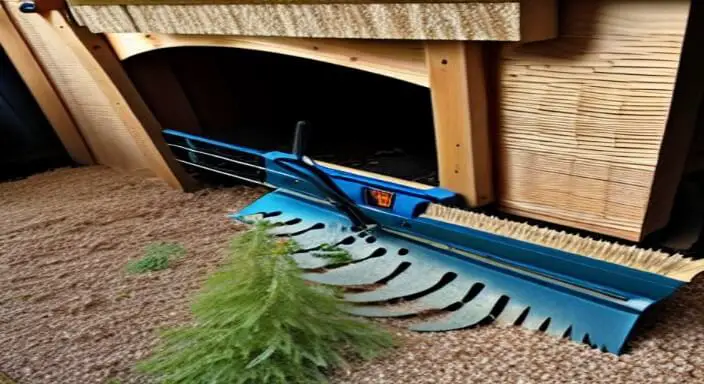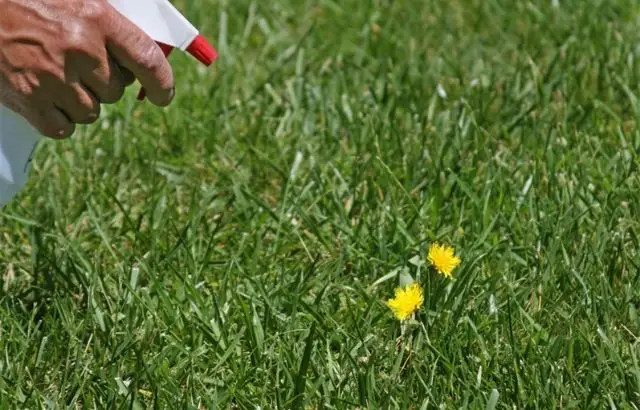River birch trees are a popular landscaping option in many areas, prized for their distinctive bark and graceful form. However, like any tree, they require regular maintenance to look their best and stay healthy. Let’s see how to trim a river birch tree.
One essential part of this maintenance is trimming or pruning, which helps control the tree’s growth and prevents damage from storms, disease, and pests. However, many people need help trimming a river birch tree properly, and it may accidentally do more harm than good.
That’s why we’ve put together this guide on how to trim a river birch tree like a professional so you can keep your trees looking beautiful and healthy with these steps:
- Select the branch you wish to cut.
- Mark the area of your intended cut, and only cut what is necessary.
- Make your first cuts at a slight angle from the branch’s stem.
- Make additional cuts to refine and complete the shape of the branch.
- Cut branches that are touching or growing near each other at the same time.
- Trim branches upward, preventing components from contacting anything on their way down.
- Be sure that all branches you have just trimmed will fall in a safe direction (i.e., away from people and objects).
- When you finish trimming, rake up sawdust from your cutting process.
In this Home Affluence post, we’ll cover everything you need about river birch tree trimming, from the best tools and techniques to the optimal time of year.
We’ll also discuss common mistakes to avoid and share some tips for maintaining your river birch trees’ overall health and appearance.
How To Trim A River Birch Tree
1. Select the branch you wish to cut.
Trimming a River Birch Tree is an essential practice that helps maintain its health and aesthetics over time. Understanding how to select the branch you wish to cut is essential.
First and foremost, it is important to identify the dead, dying, or diseased branches, as they should be removed first.
Next, identify any branches that are crossing each other or are too close together. These branches can damage each other and create weak spots in the tree.

Finally, look for branches interfering with structures or property, such as power lines, buildings or other plants.
Once you have identified the branch (es) to cut, it is important to use the appropriate tools to make precise cuts without damaging the surrounding areas or the tree itself.
2. Mark the area of your intended cut, and only cut what is necessary.
Trimming a River Birch Tree requires proper techniques to ensure healthy growth and avoid damage. Before beginning, it is essential to mark the area of your intended cut before initiating the process.
This step will help you identify where the branch or limb needs to be trimmed, preventing unnecessary cutting. Once you have determined where the cut is required, it is crucial only to cut what is necessary.

Removing more limbs or branches than needed can damage or weaken the tree’s structure, making it more susceptible to diseases or pests.
Therefore, cutting the branch or limb as close to the tree trunk as possible without injuring it is vital.
Following these steps will help maintain the health and beauty of your River Birch Tree while ensuring the safety of the plant and any surrounding property.
3. Make your first cuts at a slight angle from the branch’s stem.
If you’re looking to maintain the appearance and health of your River Birch tree, it’s important to know how to trim it properly.
One key tip to remember is to make your first cuts at a slight angle from the branch’s stem.
This technique will help to avoid tearing the bark and damaging the tree’s overall structure.
Using sharp and clean pruning shears to make each cut is also important.

When trimming larger branches, remember to make a series of cuts to prevent the branch’s weight from causing it to crack and potentially harm the tree.
Following these guidelines, you can effectively trim your River Birch tree and help ensure its long-term vitality.
4. Make additional cuts to refine and complete the shape of the branch
When learning how to trim a River Birch tree, it is important to carefully make additional cuts in refining and completing the shape of the branch.
This process involves making final cuts to ensure the result is an even, clean shape that blends well with the rest of the tree.

We recommend starting by trimming any sucker branches that may be growing from the tree’s base, as these can sap important nutrients and take away from the overall appearance.
Once this has been done, focus on removing any dead or diseased branches, as these can harm the tree’s health.
With these preliminary steps taken care of, make additional cuts in refining the remaining branches, removing any excess or unwanted growth to create a cohesive, visually pleasing shape for your River Birch tree.
5. Cut branches that are touching or growing near each other at the same time
Maintaining a healthy and attractive River Birch tree requires periodic trimming to remove dead, diseased, or crossing branches while promoting good air circulation and light penetration throughout the canopy.
When trimming a River Birch tree, starting with a well-thought-out plan and the necessary tools, including sharp cutting tools such as pruning shears and saws, is crucial.

When trimming your River Birch tree, one important strategy is to cut branches touching or growing near each other simultaneously. This technique helps to reduce the occurrence of rubbing and promotes proper branching.
When branches rub together, they create wounds that expose the tree to pests and diseases, and friction can create wounds that prevent the tree from healing properly. Cutting them reduces the chances of creating new wounds and minimizes the risk of diseases and pests attacking the tree.
6. Trim branches by using an upward motion, which prevents branches from contacting anything on their way down
If you want to trim the branches of a River Birch Tree, it is important to use the right technique to avoid any damage to the tree. One important technique is to use an upward motion while trimming the branches.
It technique will ensure the branches do not come in contact with anything on their way down, which can otherwise cause damage to the tree.

When trimming the branches, start by making a small cut on the underside of the branch. Once you have the cut, move upward to remove the branch in sections.
It will allow you to control the movement of the branch and prevent it from snapping off suddenly.
Always use clean and sharp pruning shears to avoid damaging the tree, and never remove more than 25% of the tree’s branches in a single season.
7. Be sure that all branches you have just trimmed will fall in a safe direction (i.e., away from people and objects)
Safety should always be the top priority when trimming a river birch tree. One important step to ensure safety is ensuring that all branches that have been trimmed will fall in a safe direction, away from people and objects.
It can be accomplished by assessing the branch’s angle and determining the direction it may fall when cut.

A general rule of thumb is to make cuts at a 45-degree angle to encourage the branch to fall in the desired direction.
It’s also important to clear the immediate area of any people, pets, or objects before trimming to prevent accidents or damage. These precautions allow you to safely and effectively trim your river birch tree.
8. When you are finished trimming, rake up any sawdust from your cutting process
When trimming a River Birch tree, cleaning up after the trimming process is important. It includes raking up any sawdust left behind from the cutting process.
Sawdust can create a slip hazard and may harm the tree’s growth by blocking sunlight from reaching the tree’s roots.

Raking up the sawdust also provides a neat appearance to the surrounding area of the tree.
After completing the trimming process, take some time to clean up and remove any debris from the job site. Properly disposing of the sawdust will help promote a healthier and safer environment for your River Birch tree.
My Opinion
Remembering to trim the tree during the right season, using the correct tools, and prioritizing safety is important.
By trimming your river birch tree properly, you can help ensure its health, longevity, and beauty. Someone may think this can be intimidating, but it can do it easily and safely with the right tools and techniques.
Always prioritize safety and observe precautions when handling sharp tools or climbing a ladder.
Most importantly, don’t over-prune the tree, which could damage its health and appearance.
With patience, practice, and a little knowledge, anyone can maintain a beautiful and healthy river birch tree for a long time.




